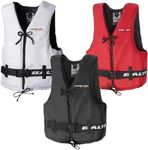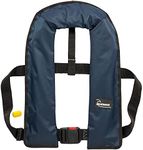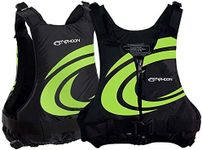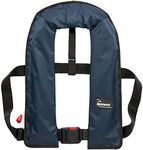Buying Guide for the Best Life Jackets
Choosing the right life jacket is crucial for ensuring safety while engaging in water activities. A life jacket, also known as a personal flotation device (PFD), is designed to keep you afloat and reduce the risk of drowning. When selecting a life jacket, it's important to consider various factors such as the type of activity, the fit, and the specific features that will best meet your needs. Here are some key specifications to help you make an informed decision.TypeLife jackets come in different types, each designed for specific activities and conditions. Type I jackets are for offshore use and provide the highest buoyancy, making them suitable for rough waters and extended survival situations. Type II jackets are for near-shore use and are less bulky, suitable for calm waters where rescue is likely to be quick. Type III jackets are for recreational use, offering comfort and freedom of movement, ideal for activities like kayaking, fishing, and sailing. Type V jackets are specialized and must be used according to their label instructions, often for specific sports like windsurfing or paddling. Choose the type based on the activity you plan to engage in and the water conditions you expect to encounter.
BuoyancyBuoyancy refers to the life jacket's ability to keep you afloat. It is measured in pounds and indicates how much weight the jacket can support in water. Higher buoyancy is essential for rough waters and heavier individuals, while lower buoyancy is sufficient for calm waters and lighter individuals. Generally, adult life jackets have a buoyancy range from 15.5 to 22 pounds. To pick the right buoyancy, consider your weight and the water conditions. If you are heavier or expect rough waters, opt for a higher buoyancy life jacket.
FitA proper fit is crucial for the effectiveness of a life jacket. It should be snug but comfortable, allowing for freedom of movement without riding up or slipping off. Life jackets come in various sizes, often categorized by chest measurements and weight. To ensure a good fit, measure your chest size and check the manufacturer's sizing chart. Try on the jacket and adjust the straps to achieve a secure fit. For children, ensure the jacket is specifically designed for their weight and size, and always test the fit before use.
MaterialLife jackets are made from different materials, each offering varying levels of durability and comfort. Common materials include nylon, neoprene, and polyester. Nylon is lightweight and durable, making it suitable for general use. Neoprene is more comfortable and flexible, ideal for water sports where mobility is important. Polyester is resistant to UV rays and mildew, making it a good choice for long-term use in sunny conditions. Choose the material based on your comfort preference and the type of activity you will be doing.
VisibilityVisibility is an important safety feature, especially in emergency situations. Life jackets often come in bright colors like orange, yellow, or red, and may include reflective strips to enhance visibility in low light conditions. High visibility can make it easier for rescuers to spot you in the water. If you are engaging in activities where visibility is crucial, such as boating or fishing, opt for a life jacket with bright colors and reflective elements.
Additional FeaturesSome life jackets come with additional features that can enhance safety and convenience. These may include pockets for storing small items, whistles for signaling, and harnesses for attaching to a boat or other equipment. Consider what features might be useful for your specific needs. For example, if you are kayaking, pockets can be handy for storing snacks or a small first aid kit. If you are sailing, a harness can provide extra security. Choose a life jacket with features that align with your activities and preferences.
















